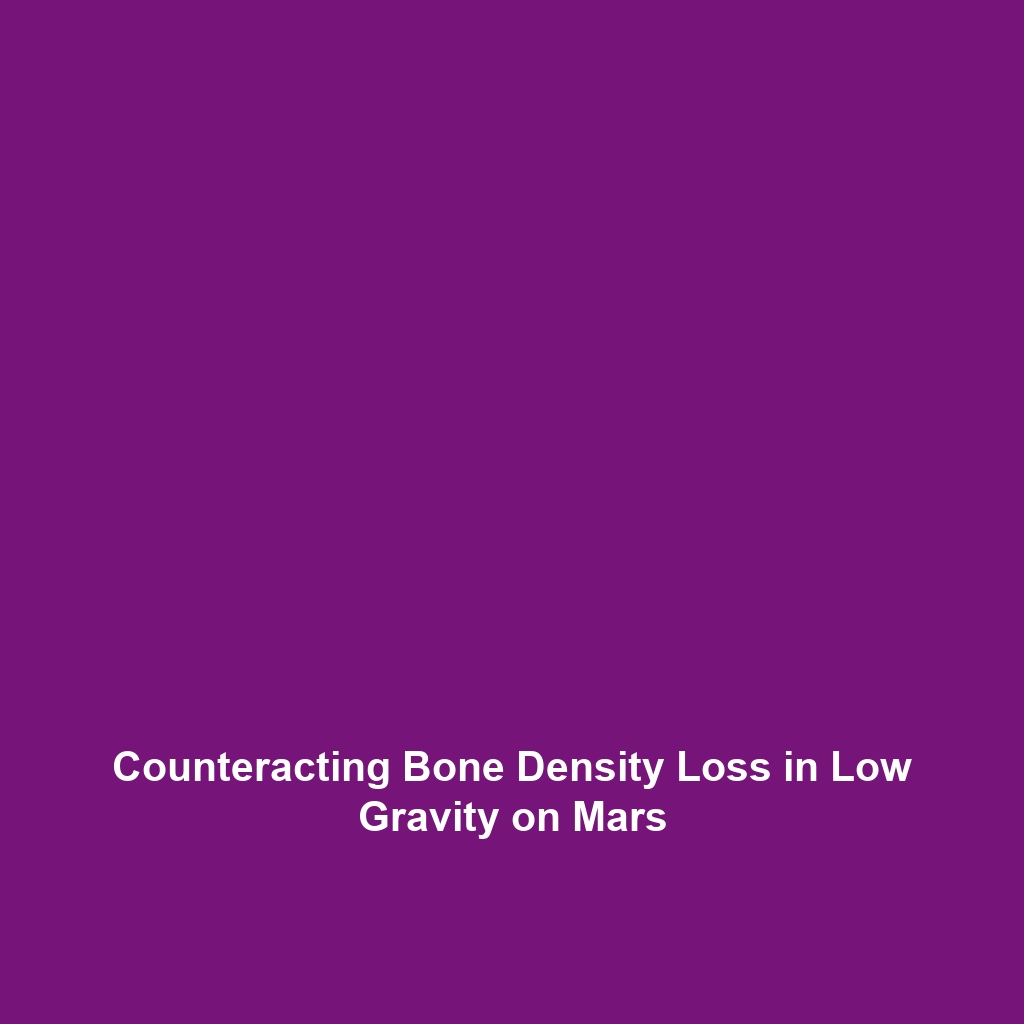Bone Density Loss in Low Gravity: Counteracting Effects with Exercise and Medicine
Introduction
The prospect of colonizing Mars poses unique challenges for human health, particularly in regard to bone density loss. Prolonged exposure to low-gravity environments can lead to significant decreases in bone density, raising concerns for long-term sustainability of life on Mars. Addressing bone density loss through effective countermeasures, including exercise and medicine, is critical for ensuring the health and safety of potential Martian inhabitants. This article delves into the implications of low gravity on bone health and presents strategies for mitigating these effects, thereby highlighting its importance in the ongoing quest for colonizing Mars.
Key Concepts
Understanding bone density loss in low gravity involves several key principles:
- Bone Remodeling: In a normal gravitational environment, bone tissue undergoes continuous remodeling. Low gravity disrupts this balance, leading to accelerated bone resorption.
- Muscle Weakness: The reduction in mechanical loading not only affects bones but also leads to muscle atrophy, which indirectly contributes to higher rates of bone density loss.
- Exercise as a Countermeasure: Resistance and weight-bearing exercises have been shown to combat declines in bone density, making them vital for astronauts during extended missions.
- Pharmacological Interventions: Medications like bisphosphonates may offer additional protection against bone density loss during space travel.
Understanding these concepts is essential for developing effective strategies to maintain bone health in a colonizing Mars scenario.
Applications and Real-World Uses
Research into counteracting bone density loss informs several practical applications within the colonizing Mars framework:
- Space Missions: Implementing rigorous exercise regimens onboard spacecraft to minimize bone density loss among astronauts during travel to and from Mars.
- Martian Habitats: Designing living environments on Mars that promote physical activity through artificial gravity or dedicated exercise facilities.
- Medical Protocols: Developing protocols for administering medication to Mars inhabitants to prevent or slow down bone density loss.
These applications underscore how bone density loss management is integral to the objective of colonizing Mars.
Current Challenges
Despite advancements, there are several challenges associated with understanding and addressing bone density loss in the context of colonizing Mars:
- Limited Research: Current studies primarily focus on short-duration missions; long-term effects of low gravity on bone health remain understudied.
- Logistical Constraints: Implementing exercise programs and medical treatments in space will require efficient use of resources and space.
- Individual Variation: Differences in physiology among individuals may impact the effectiveness of countermeasures.
Addressing these challenges is vital to ensure the health of future Martian settlers.
Future Research and Innovations
Looking ahead, research into bone density loss is expected to yield innovative solutions crucial for colonizing Mars. Some promising areas of future research include:
- Advanced Exercise Devices: Development of portable and effective resistance training equipment that can be easily used in low-gravity environments.
- Biological Modeling: Utilizing genetic engineering and advanced pharmaceuticals to promote bone density and resilience.
- Telemedicine: Implementing remote health monitoring for astronauts to personalize exercise and treatment plans based on real-time data.
These innovations hold potential for transforming how we approach bone density loss during long-duration space missions.
Conclusion
In summary, addressing bone density loss in low gravity is a critical factor in the broader context of colonizing Mars. Through a combination of exercise, medical interventions, and ongoing research, we can mitigate the risks associated with prolonged exposure to low-gravity environments, ultimately paving the way for successful human habitation on Mars. For further reading, explore our articles on exercise in space and medical advancements for astronauts.
